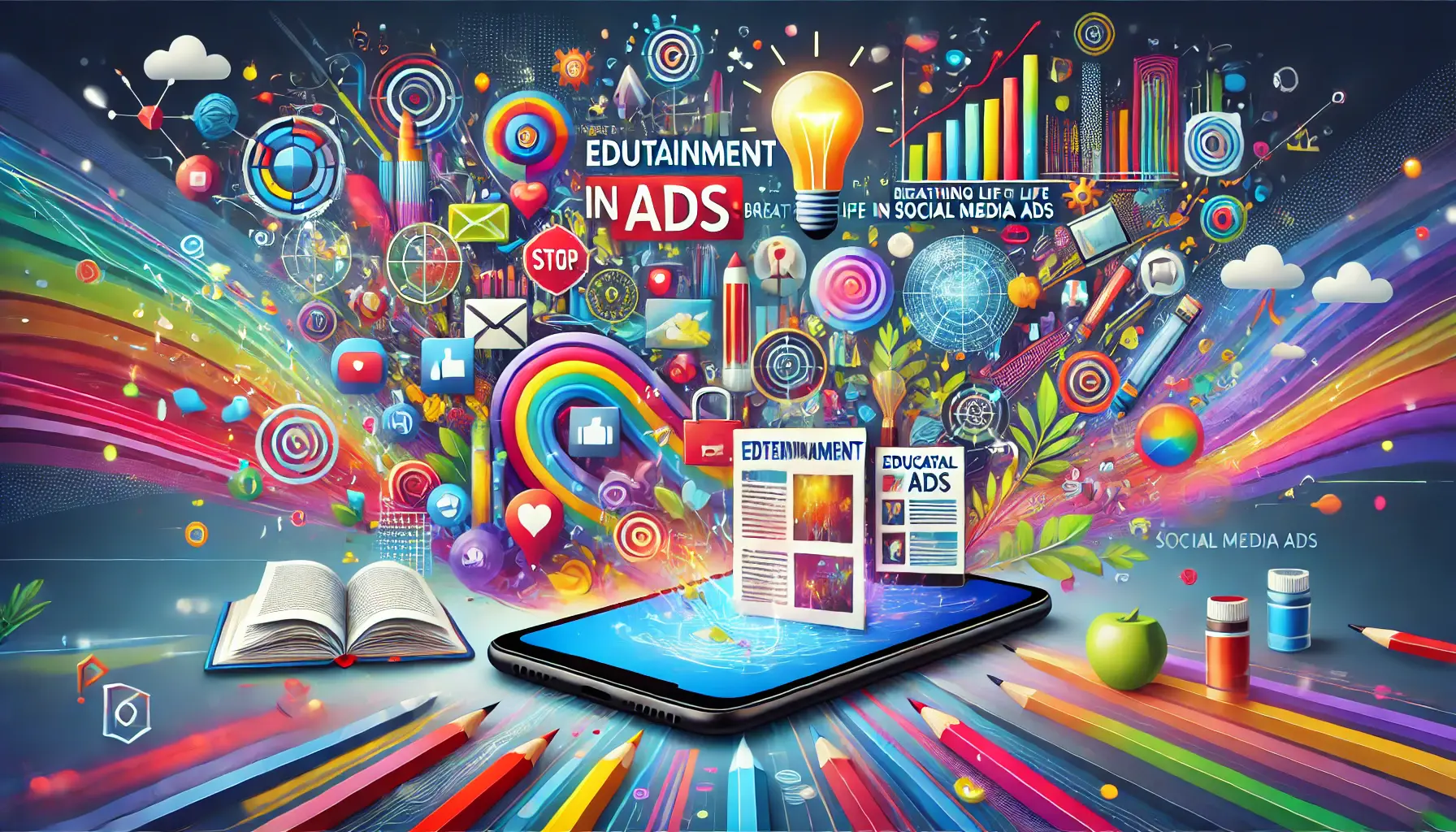As we delve into the dynamic world of social media advertising, it’s crucial to recognize the ever-evolving landscape of ad trends.
The digital era has ushered in a myriad of innovative strategies and techniques, particularly in the realm of social media ads.
This comprehensive exploration aims to dissect and understand these trends, offering valuable insights for marketers, businesses, and enthusiasts alike.
The significance of staying abreast with these trends cannot be overstated.
In an environment where consumer behaviors and technological advancements shift rapidly, grasping the nuances of social media ad trends is not just beneficial – it’s imperative for success.
This article, segmented into six detailed parts, will guide you through the latest developments, strategies, and predictions in social media advertising, ensuring you’re well-equipped to navigate this vibrant and ever-changing domain.
- The Rise of AI and Automation in Social Media Ads
- Emerging Platforms and Formats in Social Media Advertising
- Shift Towards Authenticity and User-Generated Content
- Integrating Influencer Marketing in Social Media Ads
- Video Content Dominance in Social Media Ads
- Adapting to the Evolving Landscape of Social Commerce
- Embracing the Future of Social Media Advertising
- FAQs on Ad Trends in Social Media Advertising
The Rise of AI and Automation in Social Media Ads
The integration of Artificial Intelligence (AI) and automation in social media advertising has revolutionized how ads are created, targeted, and optimized.
AI algorithms now play a pivotal role in analyzing consumer data, predicting behaviors, and personalizing ad content to enhance user engagement.
Automation tools streamline ad creation and management, making it more efficient and cost-effective.
One of the standout features of AI in social media ads is its ability to offer hyper-personalized content.
By leveraging data analytics, AI can tailor ads to individual preferences, leading to higher engagement rates and improved ROI.
Moreover, automation in ad scheduling and placement ensures that ads reach the right audience at the optimal time, maximizing their impact.
Personalization at Scale
AI-driven personalization allows brands to create ads that resonate deeply with their audience.
This approach goes beyond basic demographic targeting, delving into behavioral and psychographic segmentation.
The result is a more relevant and engaging ad experience for users, leading to increased brand loyalty and conversion rates.
Furthermore, AI’s predictive capabilities enable marketers to anticipate future trends and consumer needs, allowing for proactive and strategic ad planning.
This foresight is invaluable in staying ahead of the competition and aligning ad campaigns with emerging consumer interests.
AI and automation are not just futuristic concepts; they are here, transforming social media advertising into a more efficient, personalized, and predictive practice.
Emerging Platforms and Formats in Social Media Advertising
The landscape of social media is continuously evolving, with new platforms and ad formats emerging regularly.
These developments offer fresh avenues for brands to connect with their audience, often in more immersive and interactive ways.
Understanding these new platforms and formats is crucial for advertisers seeking to stay relevant and capture the attention of diverse audience segments.
Let’s explore some of the key emerging trends in this space.
New Social Media Platforms Gaining Traction
While giants like Facebook and Instagram continue to dominate, newer platforms are gaining ground, attracting specific demographics and niche markets.
Platforms like TikTok and Snapchat have introduced unique ad formats, leveraging short-form video and AR filters to engage younger audiences.
- TikTok: Known for its short, engaging video content, TikTok offers a fertile ground for creative, viral ad campaigns.
- Snapchat: With its AR capabilities, Snapchat provides advertisers with innovative ways to create immersive ad experiences.
Innovative Ad Formats
As social media platforms evolve, so do the ad formats they offer.
From interactive stories to shoppable posts, these new formats are designed to increase engagement and streamline the customer journey.
- Interactive Stories: Platforms like Instagram and Facebook have popularized stories, allowing brands to create interactive ads with features like polls and swipe-up links.
- Shoppable Posts: E-commerce integration in social media enables users to shop directly from posts, simplifying the path to purchase.
These emerging platforms and formats are reshaping the landscape of social media advertising.
By embracing these trends, advertisers can create more engaging, effective campaigns that resonate with their target audience.
Incorporating these innovative platforms and formats into your advertising strategy can significantly enhance engagement and conversion rates.
Shift Towards Authenticity and User-Generated Content
In the realm of social media advertising, there’s a growing emphasis on authenticity and user-generated content (UGC).
This shift reflects a desire for more genuine and relatable ad experiences, as audiences increasingly seek trustworthiness and transparency from brands.
Let’s delve into how this trend is influencing social media ad strategies and why it’s becoming a cornerstone for successful campaigns.
Authenticity as a Key Driver
Consumers today are more discerning and value authenticity highly.
They prefer ads that feel genuine and resonate with their real-life experiences.
This authenticity can manifest in various forms, from the tone of the ad to the visuals used.
- Real-life Testimonials: Featuring actual customers and their stories in ads can significantly boost credibility and relatability.
- Behind-the-Scenes Content: Showing the human side of brands, including the process behind products or services, fosters a deeper connection with the audience.
The Rise of User-Generated Content
User-generated content is becoming a powerful tool in social media advertising.
UGC not only enhances authenticity but also engages the community, encouraging more interaction and user involvement.
- Customer Reviews and Photos: Incorporating customer reviews and images in ads lends authenticity and provides social proof.
- Hashtag Campaigns: Encouraging users to create content related to the brand and share it with specific hashtags can amplify reach and engagement.
Embracing authenticity and UGC in social media ads can lead to higher trust, better engagement, and stronger brand loyalty.
This approach aligns with the evolving expectations of consumers who value genuine connections with the brands they support.
Remember, authenticity and UGC are not just trends; they are reflections of a deeper shift in consumer values towards more genuine brand interactions.
Integrating Influencer Marketing in Social Media Ads
Influencer marketing has become an integral component of social media advertising strategies.
The power of influencers in shaping consumer opinions and driving engagement is undeniable.
This part explores how brands are leveraging influencer partnerships to amplify their social media ad campaigns.
Choosing the Right Influencers
Success in influencer marketing hinges on partnering with influencers who align with the brand’s values and resonate with its target audience.
It’s not just about the number of followers; relevance and engagement rates are key.
- Micro and Nano Influencers: Brands are increasingly collaborating with micro (10,000-100,000 followers) and nano (1,000-10,000 followers) influencers for their higher engagement rates and niche audiences.
- Authentic Alignment: Choosing influencers whose style and values align with the brand ensures a more authentic and effective partnership.
Integrating Influencers in Ad Content
Influencers can be integrated into social media ads in various creative ways, enhancing the authenticity and appeal of the campaigns.
- Sponsored Posts: Influencers can create sponsored content that seamlessly blends with their usual posts, providing a natural feel to the ad.
- Story Takeovers: Allowing influencers to take over the brand’s social media stories for a day can offer fresh, engaging content to the audience.
Incorporating influencer marketing into social media ads not only extends the reach of campaigns but also adds a layer of trust and relatability that traditional ads might lack.
This strategy is particularly effective in reaching younger audiences who value authenticity and peer recommendations.
Influencer marketing, when done right, can significantly boost the effectiveness of social media advertising campaigns.
Video Content Dominance in Social Media Ads
Video content has emerged as a dominant force in social media advertising.
Its ability to engage audiences through dynamic and compelling storytelling makes it an invaluable tool for brands.
This part explores the growing importance of video content in social media ads and how it’s shaping advertising strategies.
Short-Form Video: The New Standard
Short-form video content, popularized by platforms like TikTok and Instagram Reels, has become a staple in social media advertising.
These brief, engaging videos are perfect for capturing the short attention spans of modern audiences.
- Engagement and Shareability: Short-form videos are highly engaging and shareable, making them ideal for viral marketing campaigns.
- Storytelling in Seconds: Brands are challenged to tell compelling stories in a matter of seconds, leading to creative and innovative ad content.
Live Streaming and Interactive Video Ads
Live streaming and interactive video ads are gaining traction, offering real-time engagement and a deeper connection with audiences.
- Live Q&A Sessions: Brands can host live sessions with influencers or experts, fostering interaction and building community.
- Interactive Elements: Adding interactive elements like polls or quizzes to video ads increases viewer engagement and participation.
The dominance of video content in social media advertising is a testament to its effectiveness in engaging audiences.
Brands that harness the power of video, especially in its short-form and interactive variants, are likely to see higher engagement and conversion rates.
Video content, particularly short-form and interactive videos, is a key driver of engagement in social media advertising.
Adapting to the Evolving Landscape of Social Commerce
The integration of commerce into social media, known as social commerce, is transforming the way consumers shop online.
This evolution presents a unique opportunity for brands to leverage social media platforms not just for advertising but also as direct sales channels.
Let’s explore the current trends and strategies in social commerce.
Seamless Shopping Experiences
Social media platforms are increasingly offering features that allow users to shop directly from posts and ads, creating a seamless shopping experience.
This integration reduces the steps in the customer journey, leading to higher conversion rates.
- Shoppable Posts: Platforms like Instagram and Pinterest allow users to purchase products directly from posts, streamlining the shopping process.
- In-App Checkout: In-app checkout features enable users to complete purchases without leaving the social media platform, enhancing convenience.
Leveraging Social Proof and Influencer Collaborations
Social proof and influencer collaborations play a significant role in social commerce.
They build trust and credibility, encouraging users to make purchases based on recommendations and reviews.
- User Reviews and Ratings: Featuring user reviews and ratings on product pages within social media platforms can significantly influence purchasing decisions.
- Influencer Endorsements: Collaborating with influencers for product endorsements on social media can drive sales and increase brand visibility.
As social commerce continues to grow, brands that adapt to this evolving landscape and integrate social media into their sales strategies are likely to see significant benefits.
By creating a seamless shopping experience and leveraging social proof, brands can effectively convert their social media audience into customers.
Social commerce is reshaping the online shopping experience, offering brands a unique opportunity to merge advertising with direct sales on social media platforms.
Embracing the Future of Social Media Advertising
As we reflect on the dynamic and multifaceted nature of social media advertising, it’s evident that the landscape is continually evolving, shaped by innovative technologies and changing consumer behaviors.
The trends we’ve explored in this article underscore the importance of staying ahead in a competitive digital world.
Adapting to these trends is not just a strategy; it’s a necessity for brands aiming to thrive in the digital age.
Key Takeaways in Social Media Ad Trends
From the rise of AI and automation to the dominance of video content, each trend offers unique opportunities and challenges.
Brands must navigate these with a keen understanding of their audience and the digital ecosystem.
Let’s recap the key insights:
- AI and Automation: These technologies are revolutionizing ad personalization and efficiency, making them indispensable tools for modern advertisers.
- New Platforms and Formats: Staying agile and open to emerging platforms and innovative ad formats is crucial for reaching diverse audience segments.
- Authenticity and UGC: Emphasizing genuine content and leveraging user-generated material can significantly enhance brand trust and engagement.
- Influencer Marketing: Carefully selected influencer partnerships can amplify a brand’s message and connect with audiences on a more personal level.
- Video Content: The shift towards short-form and interactive video content is reshaping how brands engage and captivate their audience.
- Social Commerce: Integrating commerce into social media platforms offers a seamless shopping experience, merging advertising with direct sales.
In conclusion, the trends in social media ads are not just fleeting changes but indicators of deeper shifts in consumer preferences and technological advancements.
Brands that embrace these trends, adapting their strategies to align with the evolving digital landscape, are poised to succeed.
The future of social media advertising is vibrant and promising, filled with opportunities for those ready to innovate and engage with their audience in meaningful ways.
Enjoyed the article? Let its author handle your social media ads. Visit our service page to get started!
FAQs on Ad Trends in Social Media Advertising
Stay informed with these frequently asked questions about the latest trends in social media advertising.
AI significantly enhances ad personalization and targeting, leading to more efficient and effective social media advertising campaigns.
New platforms like TikTok introduce unique ad formats and creative opportunities, attracting niche audiences and driving engagement.
Authenticity builds trust and relatability, making ads more appealing and effective in engaging the modern, discerning audience.
Influencers amplify brand messages, adding credibility and a personal touch to social media advertising campaigns.
Video content, especially short-form, captures attention quickly and effectively, making it a key driver of engagement in social media ads.
Social commerce integrates shopping directly into social media, creating seamless experiences and driving direct sales through ads.
User-generated content enhances authenticity, fosters community engagement, and provides social proof in social media ads.
Short-form videos offer a quick, engaging way to convey messages, making them highly effective for capturing audience attention in ads.










